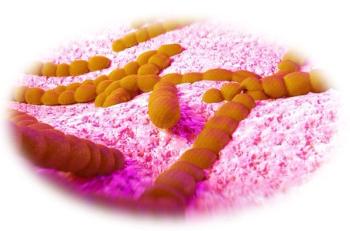
Yellow Nail Syndrome and Lichen Planus of the Skin and Nails
Yellow, thickened nail plates; complete or partial loss of fingernails; asymptomatic greenish black discoloration--what do you suspect is the underlying cause in these cases?
Case 1:
Yellow, thickened nail plates with loss of lunulae are noted in a 76-year-old man who has severe chronic obstructive pulmonary disease (COPD).
What can you tell the patient about this nail deformity?
(Answer on next page.)
Case 1:
This patient has
yellow nail syndrome,
which may be associated with lymphedema and respiratory diseases, such as COPD and bronchiectasis. Yellow nail syndrome is uncommon, and the pathogenesis is unclear. Typically, the nail growth slows or even stops. The colors of the affected nails range from yellow to dark yellow-green. In most patients, all 20 nails are involved. There is no effective treatment.
(Case and photograph courtesy of Steven Q. Wang, MD.)
Case 2:
For more than 5 years, a 45-year-old woman has had intermittent painful erythematous and violaceous papules on her arms and legs. In addition, she has experienced complete or partial loss of fingernails. She is otherwise healthy, has no significant medical history, and is not taking any medications.
What is your clinical impression?
(Answer on next page.)
Case 2:
This patient has
lichen planus
of the skin and nails. Classically, lichen planus lesions are purple, polygonal, pruritic papules. Approximately 10% of patients with lichen planus have nail involvement.
1
Characteristic nail findings include thinning of the nail plate, vertical ridging, and complete or partial loss of the nail plates. This patient experienced all these nail changes. Lichen planus has been associated with the use of certain medications, hepatitis C virus infection, and contact allergens.
This patient's disease was controlled with oral hydroxychloroquine, 200 mg bid, and application of triamcinolone 0.1% cream to the cutaneous lesions and dystrophic nails. The response to therapy is invariably slow, and the nail changes are often difficult to reverse.
(Case and photograph courtesy of Steven Q. Wang, MD.)
Case 3:
A 53-year-old woman presents for evaluation of an asymptomatic greenish black discoloration of the distal thumb nail plate and subungual area that has persisted for several years despite oral antifungal and antibiotic therapy as well as application of corticosteroid solution and antifungal lotion. No other nail is affected. A tissue sample from underneath the nail is cultured.
Pending the culture results, what do you suspect is responsible for the nail discoloration?
(Answer on next page.)
Case 3:
Culture results revealed
Pseudomonas,
which explained the greenish black discoloration of the nail. Strains of this organism produce pyocyanin or fluorescein that individually or in combination cause the characteristic green color of
Pseudomonas
infection.
Trauma that causes separation between the nail plate and nail bed and renders the nail more susceptible to infectionis thought to be the usual cause, although this patient could not recall an injury.
Pseudomonas nail infections can be treated with vinegar or with a topical antibiotic, such as mupirocin cream or ointment. This patient was advised to trim the nail as far down as possible and apply 1 or 2 drops of vinegar twice a day until the nail color returned to normal. Within a month, the infection had completely resolved.
(Case and photograph courtesy of Joe Monroe, PA-C.)
References:
REFERENCE:
1.
Tosti A, Peluso AM, Fanti PA, Piraccini BM. Nail lichen planus: clinical and pathologic study of twenty-four patients.
J Am Acad Dermatol.
1993;28:724-730.
Newsletter
Enhance your clinical practice with the Patient Care newsletter, offering the latest evidence-based guidelines, diagnostic insights, and treatment strategies for primary care physicians.

































































































































































































































































































